The ability to store, organize, and access data seamlessly across cloud platforms can significantly enhance operational efficiency, security, and scalability. However, so many tools available, choosing the right one for your organization can be daunting. This blog explores the top cloud data management tools of 2025 and provides a comprehensive guide to selecting the best fit for your business.
Table of Contents
What is Cloud Data Management?

Cloud data management involves storing, organizing, and managing data across cloud environments. It ensures that data is accessible, secure, and optimized for use, whether for analytics, compliance, or everyday operations. As businesses increasingly adopt multi-cloud or hybrid cloud strategies, the importance of robust data management tools has grown exponentially.
These tools streamline processes such as data migration, integration, governance, and security, enabling organizations to harness the full potential of their data.
Top Cloud Data Management Tools
1. AWS Data Services
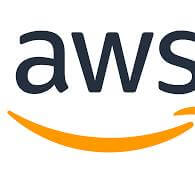
Amazon Web Services (AWS) offers a comprehensive suite of data management tools, including Amazon RDS, Amazon S3, and Amazon Redshift. These tools cater to various needs such as relational database management, scalable storage, and data warehousing.
Key Features:
Scalable storage with Amazon S3.
Advanced analytics with Amazon Redshift.
Seamless database management with Amazon RDS.
Best For: Organizations seeking a robust, scalable ecosystem for large-scale operations.
2. Microsoft Azure Data Factory
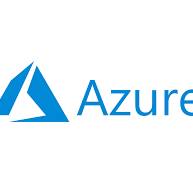
Azure Data Factory is a cloud-based data integration service designed for data workflows and pipelines. It supports over 90 data connectors, making it ideal for integrating diverse data sources.
Key Features:
Drag-and-drop interface for building data workflows.
Real-time analytics and data monitoring.
Integration with other Azure services.
Best For: Enterprises already invested in Microsoft’s ecosystem.
3. Google Cloud BigQuery
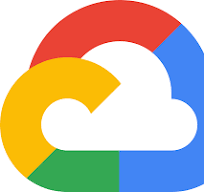
Google Cloud BigQuery is a serverless, highly scalable data warehouse designed for fast SQL queries. It’s an excellent tool for big data analytics and machine learning.
Key Features:
Real-time analytics.
Integration with Google AI and machine learning tools.
Cost-effective pay-as-you-go model.
Best For: Companies focusing on advanced analytics and AI-driven insights.
4. Snowflake
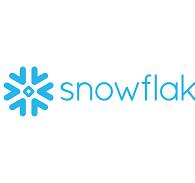
Snowflake is a cloud-native data platform that supports data warehousing, data lakes, and data sharing. Its architecture separates storage and compute, offering flexibility and cost optimization.
Key Features:
Multi-cloud support (AWS, Azure, Google Cloud).
Instant scalability and high performance.
Advanced data sharing capabilities.
Best For: Businesses with multi-cloud strategies and complex data needs.
5. IBM Cloud Pak for Data

IBM Cloud Pak for Data is an integrated data and AI platform that enables organizations to collect, organize, and analyze data efficiently. It supports hybrid cloud environments, making it versatile and adaptable.
Key Features:
Built-in AI and machine learning tools.
Data virtualization and governance.
Secure and compliant architecture.
Best For: Enterprises prioritizing data governance and AI integration.
6. Cloudera Data Platform (CDP)
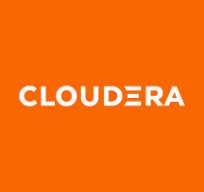
Cloudera Data Platform is an enterprise data cloud platform that offers analytics, data engineering, and machine learning capabilities. It’s designed to handle large-scale data operations.
Key Features:
Unified data management across hybrid and multi-cloud environments.
Advanced analytics and data engineering tools.
Strong focus on data security and compliance.
Best For: Organizations requiring advanced data engineering and hybrid cloud management.
7. Informatica Intelligent Cloud Services
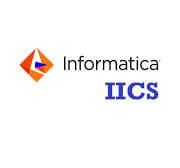
Informatica provides a suite of data integration and management tools, focusing on automation and AI-powered insights. It simplifies complex data processes across cloud and on-premises environments.
Key Features:
AI-driven data integration and governance.
Extensive support for cloud ecosystems.
Automation of data workflows.
Best For: Enterprises seeking AI-powered automation in data management.
Pros and Cons of Popular Tools
| Tool | Pros | Cons |
|---|---|---|
| AWS Data Services | Highly scalable, extensive ecosystem. | Costs can escalate with heavy usage. |
| Microsoft Azure Data Factory | Seamless integration with Microsoft tools. | Limited features compared to specialized tools like Snowflake. |
| Google Cloud BigQuery | Exceptional analytics and AI integration. | Requires expertise in Google Cloud tools. |
| Snowflake | Multi-cloud support, flexibility, and performance. | Complex pricing structure. |
| IBM Cloud Pak for Data | Comprehensive governance and AI capabilities. | Higher learning curve for new users. |
| Cloudera Data Platform | Robust for large-scale data engineering. | Premium pricing may deter smaller businesses. |
| Informatica Intelligent Cloud Services | Automation and AI-powered insights. | Complexity in implementation and setup. |
How to Choose the Right Cloud Data Management Tool
Selecting the best tool for your organization involves careful consideration of several factors. Here’s a step-by-step guide:
1. Assess Your Needs
Identify your data management goals: Is it data integration, analytics, governance, or cost optimization?
Determine the volume and type of data your organization handles.
2. Evaluate Compatibility
Consider how well the tool integrates with your existing IT infrastructure.
Check for multi-cloud and hybrid cloud support if applicable.
3. Prioritize Security and Compliance
Ensure the tool meets industry-specific compliance standards like GDPR or HIPAA.
Look for advanced security features, including encryption and access controls.
4. Focus on Scalability and Performance
Choose a tool that can scale with your business growth.
Assess performance metrics, such as query speed and data processing capabilities.
5. Analyze Costs
Compare pricing models, including pay-as-you-go, subscriptions, and reserved instances.
Factor in additional costs like data transfer fees or training expenses.
6. Leverage Trial Versions
Most providers offer free trials or demos. Test the tools to gauge their usability and features.
7. Seek Vendor Support
Evaluate the quality of customer support, training resources, and documentation provided by the vendor.
Future Trends in Cloud Data Management Tools
1. Increased Use of AI and Automation
AI-driven tools are revolutionizing cloud data management by automating tasks such as data integration, anomaly detection, and compliance reporting. Expect this trend to continue, making data management more efficient.
2. Enhanced Data Security Measures
With rising cyber threats, future tools will incorporate advanced security measures, such as real-time threat detection and AI-powered risk assessment.
3. Seamless Multi-Cloud Integration
As multi-cloud strategies gain traction, tools with seamless integration capabilities across providers will dominate the market.
4. Focus on Sustainability
Green computing is becoming a priority. Future tools will optimize energy consumption and promote eco-friendly practices in data management.
Conclusion
The right cloud data management tool can transform your organization’s operations, ensuring efficiency, security, and scalability. While AWS, Azure, Google Cloud, Snowflake, and others offer unique advantages, the best choice depends on your specific needs and goals. By following the strategies outlined in this blog, you can make an informed decision and stay ahead in the ever-evolving world of cloud data management.
As businesses continue to innovate, the demand for robust cloud data management tools will only grow. Embrace the possibilities and equip your organization for success in the cloud era.
Why Businesses Trust SecureMyOrg for Comprehensive Network Security
At SecureMyOrg, we uncover and fix all possible security vulnerabilities of mobile and web, while providing solutions to mitigate risks. We are trusted by renowned companies like Yahoo, Gojek and Rippling, and with 100% client satisfaction, you’re in safe hands!







Some of the things people reach out to us for –
- Building their cybersecurity program from scratch – setting up cloud security using cost-effective tools, SIEM for alert monitoring, building policies for the company
- Vulnerability Assessment and Penetration Testing ( VAPT ) – We have certified professionals, with certifications like OSCP, CREST – CPSA & CRT, CKA and CKS
- DevSecOps consulting
- Red Teaming activity
- Regular security audits, before product release
- Full time security engineers.
Relevant Posts

Why Weak Serverless Application Security Puts Your Business at Risk
Weak security in serverless environments often goes unnoticed until it leads to real damage. Misconfigured triggers, broad permissions, and poor visibility can expose sensitive data and disrupt business operations. Understanding where the risks appear is the first step toward building safer, more reliable serverless applications.
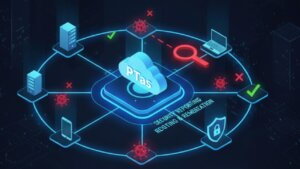
What Is Penetration Testing as a Service?
Penetration testing as a service (PTaaS) lets experts simulate real attacks to uncover vulnerabilities before hackers do. This guide explains the process, benefits, and costs, helping businesses strengthen defenses with predictable, ongoing security checks.

How To Inspect Encrypted Traffic Without Breaking Privacy
Network administrators face a challenge: securing systems while respecting privacy. This guide explains how to inspect encrypted traffic without breaking privacy using metadata, anomaly detection, and machine learning ensuring visibility, compliance, and trust.

How to Audit Infrastructure as Code (IaC) for Security Vulnerabilities
Discover how to audit Infrastructure as Code (IaC) for security vulnerabilities with this practical guide. Learn to scan IaC files using tools like Checkov, fix issues like exposed resources, and integrate audits into CI/CD pipelines. Protect your cloud systems from misconfigurations and ensure compliance with clear, actionable steps.
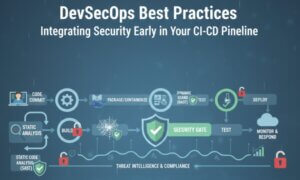
DevSecOps Best Practices: Integrating Security Early in Your CI/CD Pipeline
This article provides a practical guide to embedding security into every stage of your CI/CD pipeline. Learn core DevSecOps best practices like SAST, DAST, dependency scanning, secrets management, and compliance automation to catch vulnerabilities early, foster a culture of shared ownership, and build a secure-by-design development process that accelerates release cycles.

5 Cloud Misconfigurations That Lead to Data Breaches
Cloud misconfigurations are one of the leading causes of data breaches, yet they’re also among the most preventable. From exposed storage buckets to weak IAM policies, attackers exploit these mistakes daily. Learn about the top 5 misconfigurations and how your organization can fix them before they lead to costly data exposure.
